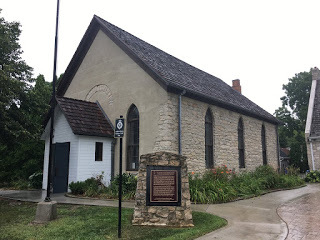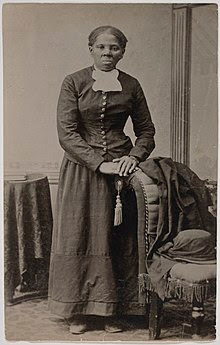The Escape Network of the 1800s: The Underground Railroad…
 Amherstburg Freedom Museum
Amherstburg Freedom MuseumSince today falls on Martin Luther King Jr. Day around the time of writing this post, I thought it fitting to do a piece on the Underground Railroad. I’m actually fortunate enough to live in an area in Ontario, Canada that played a large role in helping slaves escape the horrors of plantation life in America’s southern states during the 1800s. It’s even more of a blessing that I live near the Amherstburg Freedom Museum, where the museum’s mandate states, “To tell the stories of Amherstburg’s role in the Underground Railroad, and African-Canadians’ journey and contributions to Canada and the region”. Believe it or not, at one time this area was a chief entry point into Canada for those escaping slavery.While doing research and outlining for the next book in my young adult time travel series, The Last Timekeepers and the Noble Slave, I found a lot of interesting tidbits and facts about the Underground Railroad, and where the name came from. If you don’t know the history, this ‘escape network’ was not literally underground nor a railroad. It was figuratively “underground” in the sense of being an underground resistance. It was known as a “railroad” by way of the use of rail terminology in the code. Pretty darn clandestine, don’t you think?The Underground Railroad consisted of meeting points, secret routes, transportation, and safe houses, and personal assistance provided by abolitionist sympathizers. The resting spots where the runaways could sleep and eat were given the code names “stations” and “depots,” which were held by “station masters”. “Stockholders” gave money or supplies for assistance. Participants generally organized in small, independent groups; this helped to maintain secrecy because individuals knew some connecting “stations” along the route but knew few details of their immediate area. Escaped slaves would move north (usually following the north star, or when overcast, the river) along the route from one station to the next. “Conductors” on the railroad came from various backgrounds and included free-born blacks, white abolitionists, former slaves (either escaped or manumitted), and Native Americans. Church clergy and congregations often played a role, especially the Quakers, as well as certain sects of mainstream denominations such as branches of the Methodist church and American Baptists. Without the presence and support of free black residents, there would have been almost no chance for fugitive slaves to pass into freedom unmolested.
 Harriet TubmanIn 2019 the movie Harriet was released, telling the story of one of the most famous conductors, slave-turned-abolitionist Harriet Tubman. She was a true hero in every sense of the word, who would give every drop of her blood, and wouldn’t stop freeing her people until “this monster called slavery” was dead. Crowned “Black Moses”, Harriet, with a strong and unwavering faith in God and the help of free blacks and sympathetic whites, managed to successfully lead more than three hundred slaves, including her family, to freedom. Now, that’s some track record!If you get a chance, please check out the Amherstburg Freedom Museum’s page called ‘Sharing Our Stories’, and watch some of the videos. I guarantee that you’ll rethink the meaning of FREEDOM, and what it meant to those who escaped the evils of slavery during the 1800s, and those who chase freedom even now. I’ll leave you with this quote from one of the narrators sharing her family’s story, “You need to know who you are and of the sacrifices made for your freedom”. Amen to that.So what does freedom mean to you personally? Have you ever thought of the sacrifices made by your ancestors that has led you to living the life you are now? Would love to read your comments. Cheers, and thank you for reading my blog.
Harriet TubmanIn 2019 the movie Harriet was released, telling the story of one of the most famous conductors, slave-turned-abolitionist Harriet Tubman. She was a true hero in every sense of the word, who would give every drop of her blood, and wouldn’t stop freeing her people until “this monster called slavery” was dead. Crowned “Black Moses”, Harriet, with a strong and unwavering faith in God and the help of free blacks and sympathetic whites, managed to successfully lead more than three hundred slaves, including her family, to freedom. Now, that’s some track record!If you get a chance, please check out the Amherstburg Freedom Museum’s page called ‘Sharing Our Stories’, and watch some of the videos. I guarantee that you’ll rethink the meaning of FREEDOM, and what it meant to those who escaped the evils of slavery during the 1800s, and those who chase freedom even now. I’ll leave you with this quote from one of the narrators sharing her family’s story, “You need to know who you are and of the sacrifices made for your freedom”. Amen to that.So what does freedom mean to you personally? Have you ever thought of the sacrifices made by your ancestors that has led you to living the life you are now? Would love to read your comments. Cheers, and thank you for reading my blog.
Published on January 20, 2020 00:00
No comments have been added yet.



